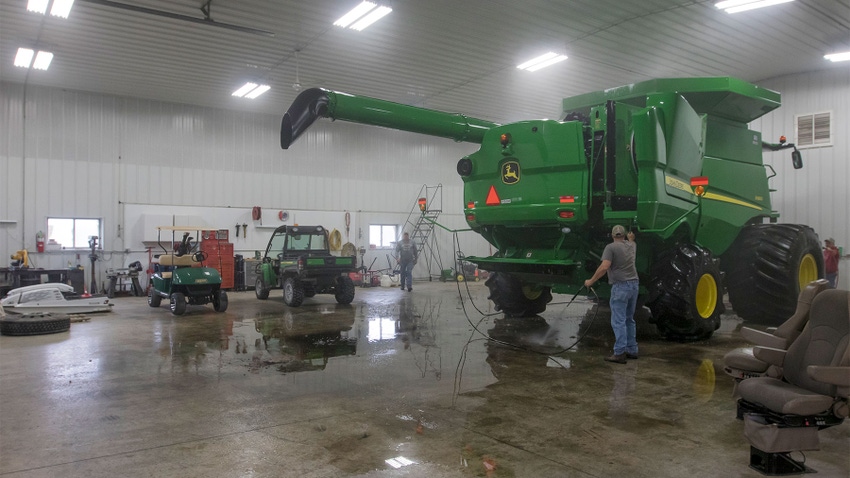
You spend lots of time prepping machinery. What about your farm shop? Do you get it ready for spring and summer?
Dennis Lee, farm product line manager with Morton Buildings, believes time invested in making sure your shop is 100% field-ready is time well spent. He advises inspecting key systems in your shop after a long winter.
Lee ticks off 10 areas worth checking inside your shop to make sure it is ready for a heavy workload:
1. Inspect compressed air systems. If you have a leak in an air hose, fix it now. “You don’t want to chase down leaks in a high-volume, compressed air system when you’re trying to fix something and get it back to the field,” Lee says.
2. Consider upgrading lighting. If your shop was built before LED lighting, consider changing out light fixtures and bulbs to pick up efficiency, Lee notes.
3. Address heating problems now. The furnace won’t work correctly when you turn it on next fall if it wasn’t functioning properly the last day it ran. “Address issues you have now — don’t wait until fall,” Lee says.
4. Make heating and cooling upgrades. Likewise, if heating worked OK last winter but you want a more efficient heating system, investigate and act now, Lee says. Maybe you have forced-air heat but you want radiant heating. “Radiant heaters tend to be more efficient versus forced air,” he says. In-floor heating systems are efficient, but if the floor is down, it’s too late for in-floor heat.
“Put some thought into how you place radiant heaters,” he adds. “It’s best not to have them directly over very tall machinery, like combines, for long periods. Items underneath radiant heaters can get hot.”
5. Maintain uncluttered computer space. If clutter accumulated in your office or server room for computers, clear it out, Lee says. This should be clear, clean space, and not littered with trash or items that should be stored elsewhere.
6. Consider high-volume fans. Walk into any shop or building with high-volume, hanging fans in summer or winter, and you know how much they help move air, Lee says. If you don’t have them yet, consider adding them now. If you have them, make sure they’re operating correctly.
7. Keep floor drains functioning properly. You have only one best time to install floor drains: before the building is built, Lee says. If you have floor drains in an existing building, make sure they function properly.
8. Consider epoxy floor coating. People who finish concrete floors with epoxy coating love how much easier the floor cleans up, Lee reports. “You can upgrade an existing floor with epoxy coating, but if you do, the secret is taking appropriate steps to clean the floor first,” he says.
9. Check fire extinguishers. Are they where they should be inside the shop? Have they been properly inspected and recharged, if necessary? Are employees trained to use them correctly?
10. Make a master check list. Before the summer workload hits, make a list of everything in the shop that needs servicing, repairing or upgrading. Then check them off as you complete them, Lee says.
Read more about:
BuildingsAbout the Author(s)
You May Also Like




